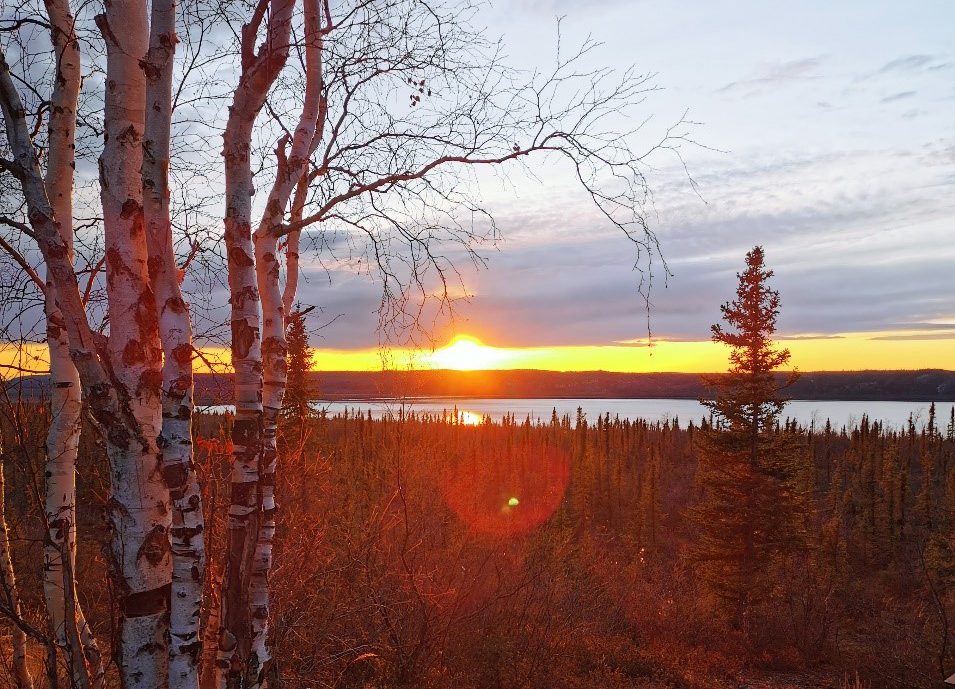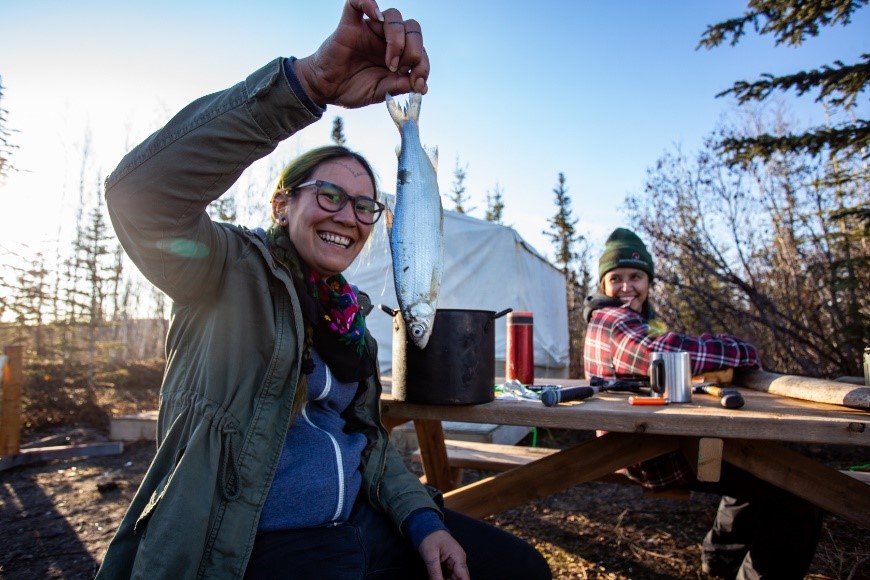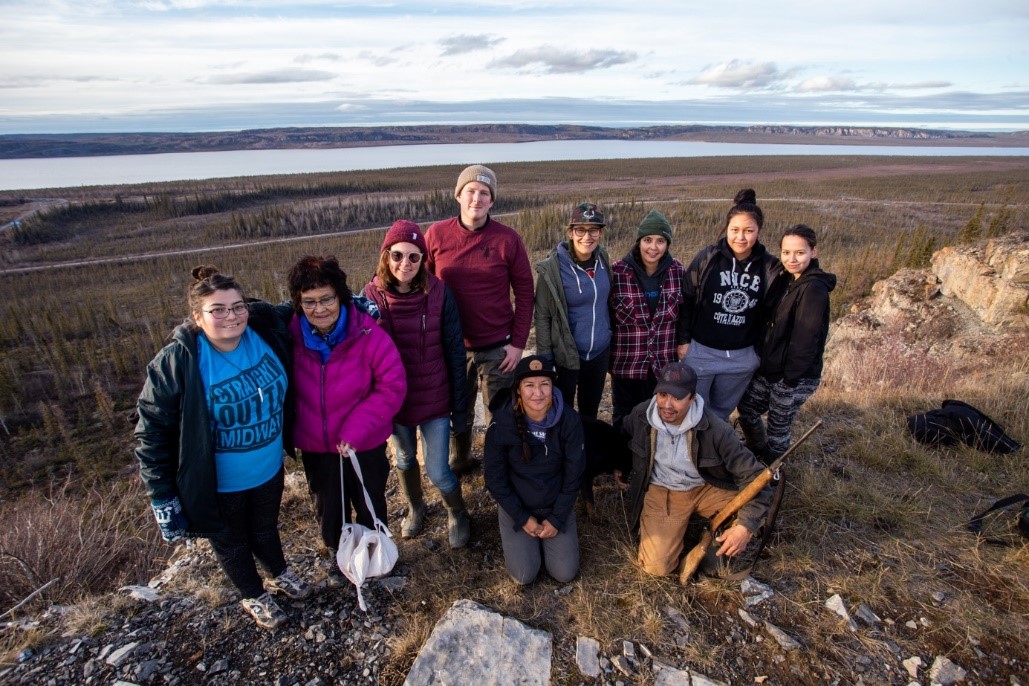Killulark Arngna’naaq is Tides Canada’s Northern Program Specialist, based out of our Yellowknife office. She recently traveled to Inuvik to take part in a strategic planning retreat for a future organization focused on Gwich’in and Inuvialuit youth. The gathering took a uniquely Northern approach, with strategy discussions happening alongside moose hide tanning and snare setting.
Read on to learn more about how the experience gave her a renewed sense of gratitude, hope, and a clear vision for future Indigenous programs in Northern Canada.
Arriving in Inuvik

I felt pretty disoriented getting off the plane in Inuvik because the sun was in a weird spot. It was lower than it should have been at 2, but I guess that is how the sun moves that far north. I wandered around the airport for a little bit, running into a few friends, saying hi, and catching up. A little while later, my ride showed up to coordinate everyone heading out there. She made sure that we all got some food from the airport diner (club sandwich from the Inuvik Airport holds up), then we were on our way to finish a few more errands before heading out to camp; pick up food, grab a bunch more coffee, get some gas, drop a few people off.
On arrival at the camp we settled into regular chores to set up staying outside a while. Figure out who was sleeping in which tent, unpack the food, and get some wood ready. Someone had to go pick up a few people who were hanging out in Tsiighetchic, so I tagged along – I haven’t spent too much time in that area, so wanted to check out the land a bit. It felt familiar.
The way of the North

We spend the next few days actually doing what we all came to do: hanging out on the land, learning different things like moose hide tanning and snare setting. What is harder to describe is how it was approached. Life in the north moves at a bit more of an intuitive pace. Schedules aren’t always followed, and you work on things for the amount of time that is needed. When you’re hanging out outside, you have to be a bit of an opportunist – if the weather is nice, try eating outside and work on a hide while you eat. If the weather is too cold or wet, you work on things that need less dexterity.
The concept was to spend a couple of days working on the strategic vision for the future of a youth organization for Gwich’in and Inuvialuit youth, then spend a few days tanning hides. To my mind, it was successful. The envisioning discussions about this future group happened in moments stolen from working on different projects at the camp. I worked on skinning then scraping a few legs, hopped in the truck to go set some snares, then skipped dry meat making to go check out the discussions. Different people that have been involved in the organization were talking about what they wanted to see in the future for youth in the area and what it might look like several years from now. I later learned that the facilitator of this discussion had planned out a solid two days of thoughts, activities, and discussions, but there isn’t much that can pull people away from the different activities happening around camp for very long.
The vision for the group
Heading back outside I realized that this camp was the vision of the group. Assembled at the Project Jewel campgrounds, here was a diverse group of Indigenous people gathered in what is both Inuvialuit and Gwich’in land, learning traditional skills and experiencing the community that forms in this setting. I know the impact that our work supports because I have been lucky enough to experience firsthand the healing and wholeness that comes from this setting. I feel so much gratitude towards the individuals that are making things like this happen, and long for a future where these spaces are available to northerners all of the time.

